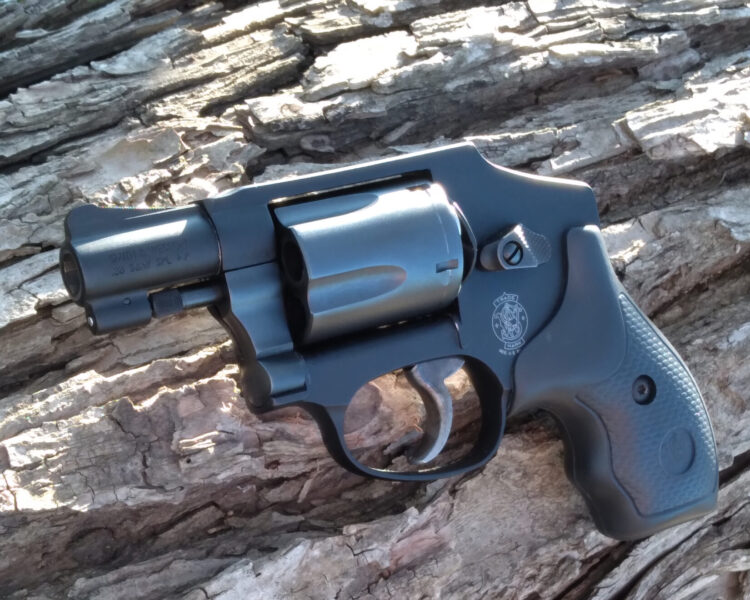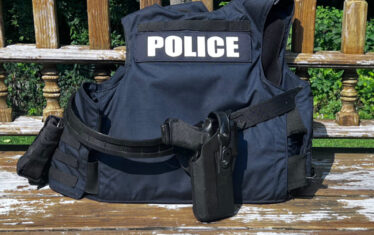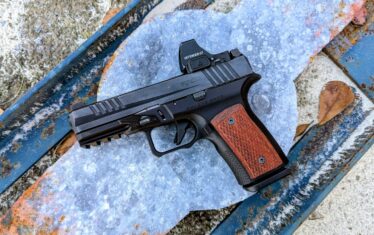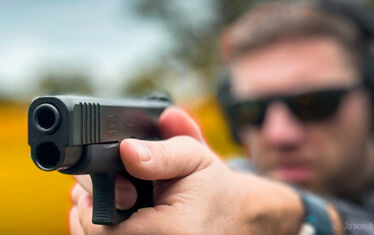Higher capacity semi-automatic handguns have gone on to replace revolvers in their former capacity as the primary handgun of choice for personal protection, military, and law enforcement use. The sole exception is the snub-nose revolver, which still has its adherents and certain strengths that semi-autos lack.
The snub-nose revolver also has the longest history as a class of concealed carry handgun that is still made for that purpose today. Follow along as we trace its evolution — from early muzzleloading models to the cutting-edge designs of today.
Colt Shrinks His Revolver
Some firearms historians consider the Colt Detective Special as the first snub-nosed revolver. Also known as the Dick Special, due to its intended use by plainclothes police detectives (with “Dick” being slang for detective), it was introduced by Colt in 1927. It had a two-inch barrel, a swing-out cylinder, a rounded grip, and it was chambered in .38 Special. These features continue to be repeated in many snubbies today, but it is inaccurate to call it the first snub-nose revolver.
In fact, earlier designs laid the groundwork for what we now recognize as snub-nosed revolvers. Pepperbox handguns, popular in the 1830s and 40s, featured revolving cylinders but lacked barrels altogether. Some required manual rotation of the cylinder to index the next round while others were double action and automatically rotated with the trigger pull.
But the first snub-nose revolver that we can truly identify as one are the Colt Baby Dragoon and Colt 1849 Pocket revolvers. Sam Colt’s revolver concept was revitalized following the limited success of the Walker Colt .44 used during the Mexican War (1846-48). Despite Colt’s earlier struggles with the 1836 Patterson revolver, which led to bankruptcy due to unmet military contract expectations, he shifted focus to the civilian market.
To that end, Colt developed a shrunken version of the .44 caliber Dragoon revolver he was marketing to the Army. It was a small-framed .31 caliber five-shooter named the Baby Dragoon. In 1850, Colt refined the look and the lock work into what became known as the 1849 Colt Pocket Model.
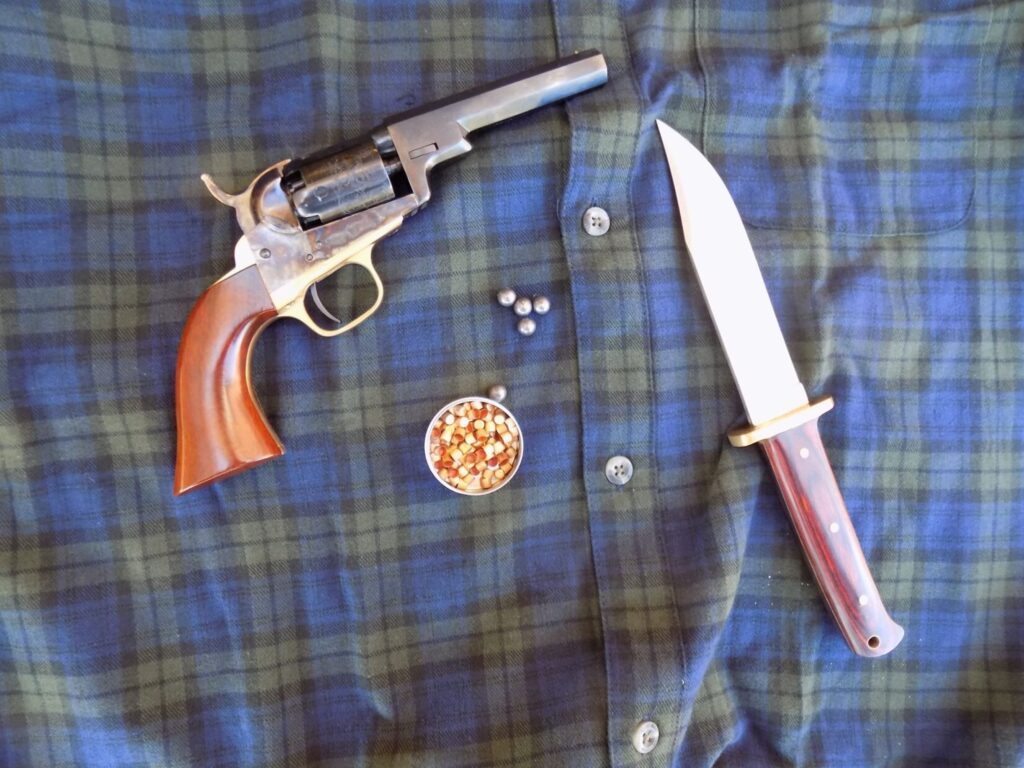
In an era of single-shot pistols and big, iron revolvers, the Colt Pocket gave you five rounds in a package that could go into a coat pocket. It weighed 1.5 pounds and came with barrel lengths ranging from 3.5 to 6.5 inches.
In 1860, the Pocket Model’s cylinder was slightly upsized to take a .36 caliber bullet, resulting in the new Pocket Police and Pocket Navy revolvers. Despite this update, these models were not nearly as popular. In fact, the Colt 1849 remained the most popular handgun Colt sold throughout the entire 19th century.
Pocket Carry and Tight Lips in the Wild West
The 1849 Colt was a muzzleloading handgun that required powder and bullets to be pushed into the front of the cylinder and capped from the back with a percussion cap. But that did not stop that model from being widely sold and the technology certainly didn’t limit enterprising individuals from cutting down the barrels of larger revolvers to make them more concealable. The next leap in snubby development came in the years that followed the American Civil War.
While TV and movie Westerns feature lawmen and outlaws openly carrying and dueling it out with big-bore revolvers like the Colt Single Action or the Smith & Wesson American, the reality was different. Just as the 1849 Colt far outsold its bigger counterparts, for every big bore Colt, there were multiples of pocket revolvers sold by Colt, Smith & Wesson, Hopkins & Allen, and dozens of other small-time makers now lost to history. In an era marked by the prohibition of firearms in cities, a snub-nosed revolver — and tight lips — ruled the day.
This growing class of revolvers took advantage of the metallic cartridge and were smaller, and sleeker than their predecessors. They were also cheaper and more available than the bigger guns. Their compact design, combined with accessibility, made them a popular choice.
The chief disadvantage of these small revolvers, however, was that the cartridges they fired left something to be desired. Common options included the .22 Short, .22 Long, and various .32 caliber rimfire and centerfire cartridges like .32 S&W. Bigger bore options of the day included the Colt New Line, a practical four-shot single action that chambered the .41 Rimfire used in the ubiquitous Remington Model 95 derringer.
In 1877, Smith & Wesson debuted the .38 S&W cartridge in their top-break No. 2 Single Action revolver. Guns like these would stay in use and be manufactured well into the 20th century, but the next step in the evolution of the snubby was to go from single action to double action.
The Double Action Era Begins
Although double action revolvers — those that fire with a simple pull of the trigger — have been around since the 1850s, the early years of the snub nose revolver were dominated by single action, hammer-fired guns. These single action designs were mechanically simpler, but slower to shoot as the hammer had to be cocked for every shot.
As time went on, slightly larger double action revolvers became more popular for their speed, especially at the ranges in which they were employed. slightly larger double action guns became more popular for the sake of speed. With double action, pulling the trigger cocks the hammer, indexes the cylinder, and drops the hammer.
Early double action revolvers often featured a top-break action, which featured simultaneous ejection of the spent cases. The cylinder was completely exposed for loading and didn’t require loading one shell at a time through a gate like on many single action guns. Guns of this type include the popular Smith & Wesson New Departure. It had many clones produced by Hopkins & Allen and H&R, but the most popular of these was the Iver Johnson Safety Automatic.
Like those other guns, the Safety Automatic was chambered in either .32 or .38 S&W. Despite the name, this was not an automatic pistol; rather, it featured an automatic safety — a transfer bar safety that prevented accidental discharge unless the trigger was pulled. It was a concept pioneered decades before Ruger popularized the concept.
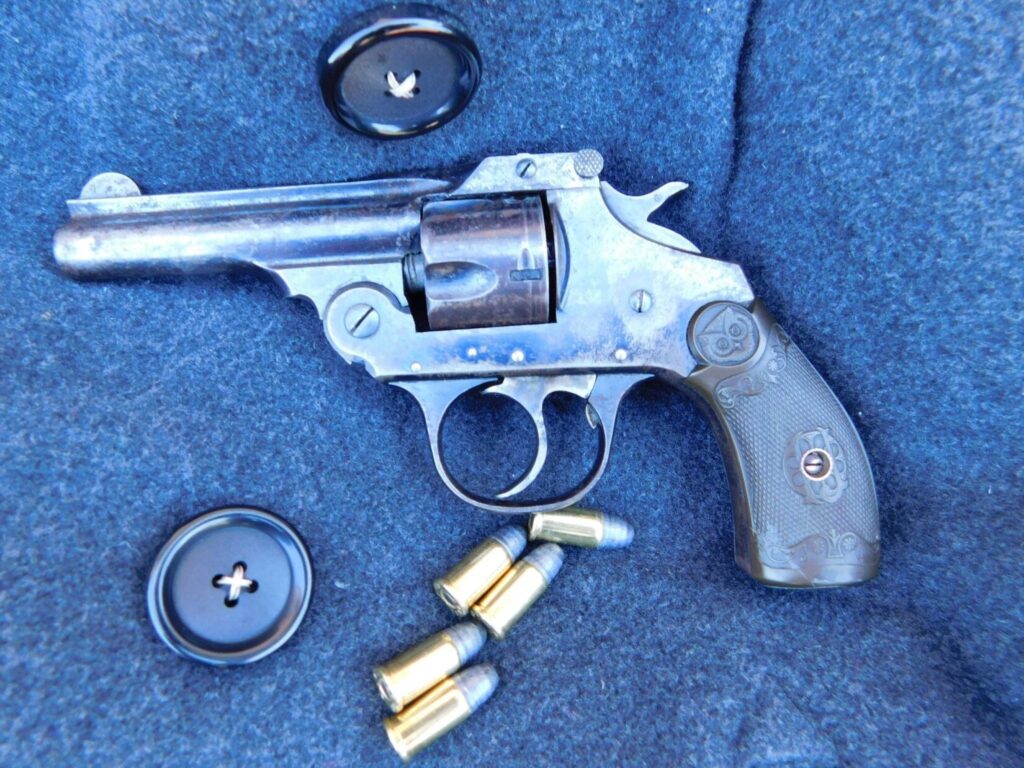
Guns like the Iver Johnson and the S&W New Departure were produced in the millions and came in a few different configurations, including options for a spurred hammer and a shrouded hammer concealed in the frame to prevent snagging on clothing.
Although these guns were incredibly popular, the top-break was a dead-end design that soldiered alongside older single action designs well into the 1940s. Long before then, the modern swing-out cylinder revolver had arrived.
Colt developed its first revolver with a modern swing out cylinder and hand actuated ejector rod with their Model 1889 .38 military revolver. Smith & Wesson soon created their own version and both companies began producing smaller framed versions.
Smith & Wesson’s first hand ejector model was developed in 1896 and was a small-frame .32 caliber revolver. This revolver would become the I-frame which, in 1950, was beefed up slightly to become the J-frame Chief’s Special in .38 Special. Colt produced smaller versions of their Police Positive revolver, known as the Pocket Positive. These early guns chambered the new .32 S&W Long round — a longer and more powerful version of the .32 S&W. The .38 S&W continued on as well.
But it was not until 1927 when Colt debuted the Detective Special in the more powerful .38 S&W Special that the modern snubbie became available to the shooting public.
The Archtypical .38 Special Snub-nose Arrives
In the 1920s, police departments began taking a critical look at their gear in the context of how it might help them fight skyrocketing crime during the Prohibition era.
Deputies and policemen in the archetypical Western setting might be seen packing a Colt or S&W Single Action in .45 Colt or .44-40. But in the East, it was common for patrolmen to carry what could be pocketed and little else. These included top break .32s and .38s.
Later the .32 S&W Long round became popular as departments began to standardize their equipment at the turn of the 20th century. By the 1920s, cops in were looking for more power and were gravitating toward .38 Special and later, .357 Magnum revolvers instead.
The rush to rearm created a need for concealable handguns that chambered the new more powerful round used in full-sized duty guns. Colt took its popular small-frame Police Positive Special in .38 Special, and gave it a round butt and a two-inch barrel to create the Colt Detective Special.
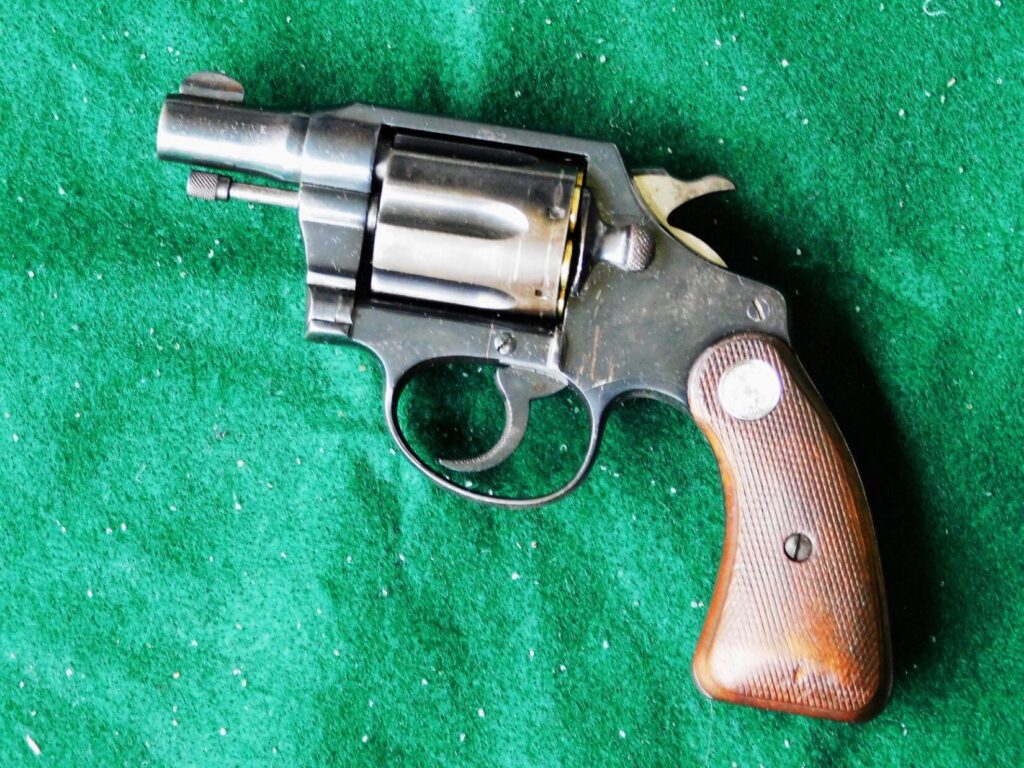
As the name suggests, Colt marketed their new six-shooter to plain clothes detectives and others who needed as much power as could be had, but in a small pocket-friendly package. The all-steel Detective Special continued in several variations until it was discontinued in 1996 (eventually reborn as the new Colt Cobra in 2017).
Smith & Wesson was suddenly behind with their underpowered I-frame model. It was not until after World War II that Smith began a facelift that would soon allow their revolvers to finally overtake Colt’s guns in the police market.
In 1950, the Chief’s Special in .38 Special came onto the market. It only carried five rounds but it was a slightly trimmer package than the Detective Special. It also came with a fully supported ejector rod, offering extra protection from damage.
Colt skipped ahead in 1951 with the introduction of their aluminum-framed Cobra. This was the Detective Special in form, but was lighter and easier on the pocket. Smith & Wesson introduced aluminum framed versions of their Chief’s Special through the 1950s, offering different hammer configurations.
The exposed hammer Chief’s Special became the Model 36, and the aluminum framed version became the Model 37. Two shrouded hammer versions, otherwise known as the Bodyguard, became the Model 38 and Model 49. Finally, a version with an entirely concealed hammer became the Model 40 and 42, denoting an all-steel and aluminum frame version.
In 1965, Smith & Wesson introduced the first all-stainless steel handgun in the Model 60. The cosmetics of these guns have changed slightly over the years, but Smith & Wesson continues to produce versions of all these revolvers. They are prized for concealed carry and back-up use in the duty role.
The Snubbie in the Polymer Era
![A contemporary S&W Hammerless J-frame [top] and the polymer-framed Ruger LCR [bottom].](https://inside.safariland.com/wp-content/uploads/2024/08/ruger-lcr-768x1024.jpg)
Over time, reliable higher-capacity semi-automatic pistols began to replace revolvers in military and law enforcement circles, a transition that was largely complete by the early 1990s. However, the revolver continues to persist in snub-nose form.
As manufacturers started producing smaller semi-automatic pistols intended for concealed carry, problems arose. Smaller handguns tend to have more malfunctions due to their small size in the hands of the average shooter. Additionally, shrinking the size of larger, more reliable designs often led to teething problems.
Snub-nose revolvers, for their part, are not as ammunition-sensitive or sensitive to how you hold the grip. Furthermore, they can be tucked well below the belt line while still presenting a firing grip, making them easier to conceal without any printing. With no reciprocating slide, the snub-nose cannot be knocked out of battery, unlike a semi-automatic, which will not fire in that circumstance. These advantages have kept the snub-nose revolver relatively popular for personal defense and even in the back-up role for some law enforcement officers.
Advances in Design
In terms of mechanical design, today’s snubbies are little different from the peak models of the S&W J-frame and Colt Detective Special. But materials, calibers, and ergonomics have introduced new possibilities.
For instance, Smith & Wesson developed scandium-framed revolvers in the 2000s to further lighten some of their aluminum-framed models. Similarly, Ruger developed their LCR (Lightweight Compact Revolver) in 2008, featuring a cammed friction-reducing trigger and a polymer grip frame — the first of its kind.
Modern Loads
Attempts to get more mileage out of snubbies also led to the creation of new cartridges. In 1985, H&R developed the .32 H&R Magnum, which had the same hitting power as standard pressure .38 Special rounds, but boasted less recoil and room for six rounds instead of the usual five out of a typical snub-nose. The concept morphed into the more powerful .327 Federal Magnum, introduced in the Ruger SP101 in 2007.
In 1991, Smith & Wesson pushed innovation further with the introduction of the 940, a J-frame revolver chambered in 9mm Luger. This model used full-moon clips for faster reloading, instead of traditional speed loaders. Then, in 1996, Smith & Wesson lengthened the cylinder frame of their J-frame .38 to accommodate a longer cylinder capable of firing .357 Magnum cartridges.
More recently, Smith & Wesson collaborated with Lipsey’s Distributors to develop the Ultimate Carry revolver. Based on the .38 Special Model 442 and 642 hammerless revolvers, it features high horn stocks for a higher grip and and an upgraded sight arrangement, including a U-notch dovetailed rear sight and a tritium night sight front post. These sights represent the latest innovations, as most snubbies still carry small, fixed sights.
The trend toward advanced optics for snub-nose revolvers continues to grow, with options like the Taurus TORO offering reflex sights as a stock option. Additionally, firms like TK Customs and DLS once handled custom optic jobs for snubbies, but now Shield Arms is prototyping their ROC (Revolver Optic Conversion), replacing the S&W J-frame sideplate with one that integrates an optics footprint.
While it’s often said that the more things change, the more they stay the same, the snub-nosed revolver defies this notion. Its long and storied history proves that it remains a timeless tool for personal protection, bridging the past, present, and future.





